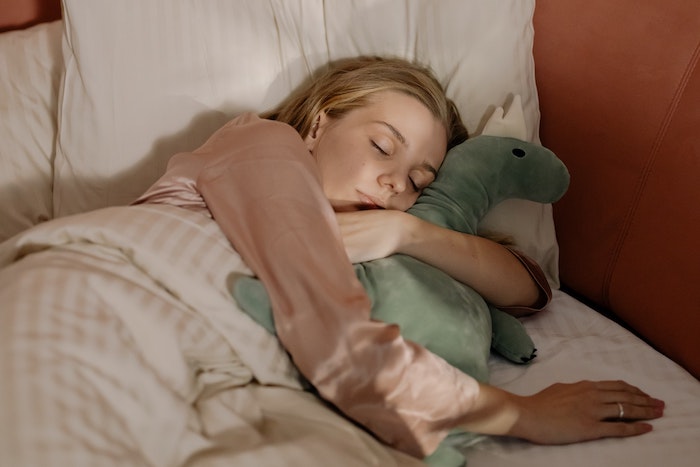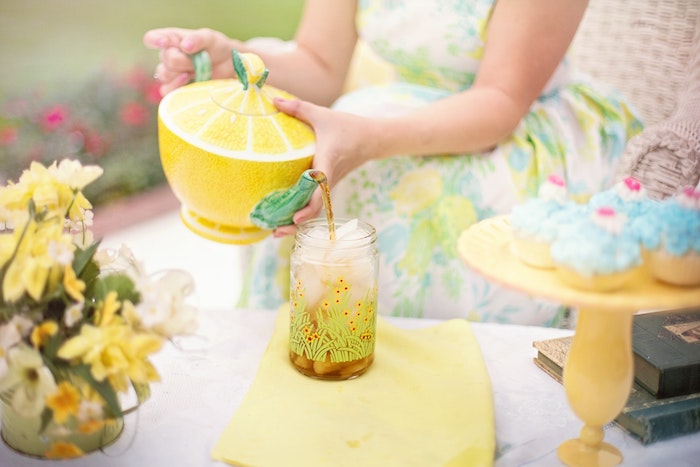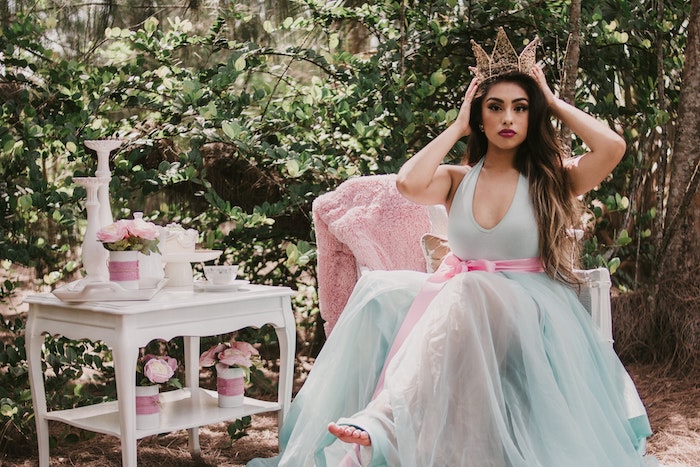Do you enjoy collecting teddy bears and wearing onesies? Do you like talking in a baby voice and being coddled like a kid? In the fetish world, your desires are classified as little play and you’re called a little. Don’t worry, you’re not alone. Lots of people do this. In fact, there are thousands who role play as littles every day.
But what exactly is a BDSM little and what type are you? Yup! There are many different kinds of littles. That’s what we’re here to talk to you about. Whether you’re a little or someone who wants to date a little, this article will help you understand what a DDLG relationship calls for and how to handle one.
DDLG Explained in a Nutshell
DDLG stands for Daddy Dom, Little Girl. It’s a type of BDSM relationship where couples explore the relationship of a parent and a child. It involves a dominant figure who takes the role of a nurturing or strict caregiver (i.e. Daddy) and a submissive who acts much younger than their real age (i.e. Little Girl).
Due to the nature of this kink, there have been many misunderstandings and controversies surrounding DDLG relationships. But let’s clear something as early as now. It’s not incest or pedophilia. Both parties who go into this type of relationship aren’t actually related and are consenting adults. And as long as both partners are happy with the relationship, there’s nothing wrong with it.
DDLG is its own type of role play and fetish but it does involve other BDSM elements found in other scenarios, such as the following.
You don’t have to do all or any of these. The awesome thing about DDLG is you get to decide which elements work best for you and your partner. For example, a DDLG relationship can be non-sexual but still be equally satisfying. All that matters is you create a relationship you enjoy whenever you want.
Here are some more important facts about DDLG.
- It’s only for consenting adults. It isn’t for anyone under the age of 18 years.
- Not all women who call their husband or boyfriend “daddy” are a little or in a DDLG relationship.
- It isn’t limited to a specific sexuality or race. The DDLG community doesn’t discriminate. Anyone can be in it.
- It’s not incest or pedophilia.
- It isn’t meant for subs to control their doms.
- A DDLG relationship isn’t the same as the one between a sugar daddy and a sugar baby.
- It isn’t about manipulating subs and having sex. A DDLG relationship can be non-sexual.
Also, there’s more than one kind of little which could be confusing if you’re new to this kink. To help you understand this fetish, let’s take a look at the different DDLG dynamics.
- Littles
- Baby girls/boys
- Middles
- Adult Babies
- Lolita
- Age players
While this type of relationship often involves a male father figure and a female child figure, anyone can enjoy this kink. There are many different DDLG relationships where partners can swap genders and roles accordingly. These include:
- DDLG. Daddy Dom Little Girl
- DDLB. Daddy Dom Little Boy
- MDLG. Mommy Dom Little Girl
- MDLB. Mommy Dom Little Boy
- TDLB. Trans Daddy Little Boy
- TMLG. Trans Mommy Little Girl
- TMLB. Trans Mommy Little Boy
- CGL. An all-encompassing term used for all types of Caregiver and Little relationships.
While CGL is the generic term for this type of relationship, we’ll be using the term DDLG in this article as it’s more well-known. But that doesn’t mean we’re disregarding all the gender variations within the kink community. All caregivers and littles, no matter their gender, are special and valid.
Common DDLG Vocabulary
Before anything else, let’s go through some of the common terms used for this kink.
- Daddy/Daddy dom. A male figure taking the dominant/parental role in a DDLG relationship.
- Mommy/Mommy dom. A female figure taking the dominant/parental role in a DDLG relationship.
- CG (Caregiver). A caregiver is the one responsible for the safety and well-being of the person acting as a little. They provide and, if necessary, punish their partner.
- Little. A little is the person who takes the submissive/child role in a DDLG relationship.
- Little age. This is the age a little identifies with.
- Scene. This term is normally used in the BDSM community to describe the scenario you’re currently enacting. Some scenarios involve a specific sexual activity or a role play scene. Once that’s done, it’s over. Everything goes back to normal.
- Little space. The little space is what DDLG practitioners describe as the headspace people enter once they’ve mentally regressed to a younger age. When in this safe space, they’re free to explore their feelings however they want without getting judged by others. But it can also leave a person quite vulnerable.
- Safe word. Having a safe word is a must in any BDSM scene as it ensures everyone’s safety. All activities must stop when this word is spoken. It’s often used when things go too far. Make sure you choose a safe word that isn’t normally spoken in your scene, such as “tangerine”.
- Safe, Sane, and Consensual (SSC). This is widely used in the BDSM community to describe the perfect relationship. It simply means that activities between two adults should be consensual, safe, and won’t cause any physical or mental trauma.
- Aftercare. Aftercare is an important step that needs to be done after a BDSM scene. This helps the people involved wind down and deal with their emotions so they can safely get back to real life.
What is a Little?
A little is the most generic term used in the DDLG kink to describe anyone who age-regresses. It’s a type of submissive that plays a childish role. That’s why they look up to their daddy/mommy for care, protection, guidance, and attention. And maybe it’s this innocence that drives caregivers to look after them.
Littles fall under a broader age regressive spectrum. They identify anywhere from kindergarten age up to pre-teens. Those who don’t claim a specific age also fall under this category.
Most littles are submissive and happy to abide by the rules and follow their caregiver’s orders. But some can also be bratty depending on the dynamics of the relationship.
What is a Middle?
A middle is basically an older little. They’re often between the ages of 11 and 16. But those who can’t decide on an age also fall under this category. Middles have more independence than littles. Middle girls like teenager stuff, such as music, clothes, makeup, flirting, and wearing their hair in teen styles like pigtails.
They generally aren’t interested in baby stuff, such as diapers, onesies, bottles, or pacifiers. But they still enjoy cartoons, coloring activities, and lots of stuffed animals. Because they take the personality of a pre-teen or a teen, they’re naturally more sexually curious, bratty, and outspoken than littles.
What is an Adult Baby?
They often take the characteristics of an infant or a toddler, making them the youngest age regressors. They’re often associated with baby talk, bottles, cribs, diaper play, and everything that goes along with being a baby. Some may even be completely non-verbal and in infantile behavior.
This goes hand in hand with the adult diaper lovers community. But not all diaper lovers are adult babies. Some older littles and people who are into age play also like wearing diapers as a kink.
What is a Baby Girl/Boy?
Baby girls/boys identify as a younger age but older than adult babies. The average age range would be between toddler and kindergarten years. These are the type of littles who often subscribe to power exchange, act bratty, and drive their caregivers to near madness. There’s a lot of sexual exploration for this DDLG dynamic.
What is a Lolita?
Lolitas are probably the most sexually explicit among all the little submissive archetypes. Some choose to be called a Lolita because they connect with the known Lolita stereotype of a pre-pubescent girl from Vladimir Nabokov’s novel.
What is Age Play?
Although the dominant partner provides parental care to their submissive, DDLG isn’t incest or pedophilia. All activities that happen inside the bedroom are between two consenting adults. Any responsible kinkster knows that. And it isn’t always sexually driven. It can just be two people enjoying age play.
So what exactly is it?
It’s simply a form of role play and power exchange where one or both participants play an age that isn’t their biological one.
Most age players pretend to be younger than they really are. Most take on the persona of a baby or young child. There are also those who identify as teenagers, but that isn’t always the case. Some don’t identify with a specific age.
And, in rare cases, some age players may assume an older age. This doesn’t happen often. It’s more likely that someone who’s biologically older will play the younger persona within the dynamic.
For some, age play is a kink or fetish, but it can also be non-sexual. It can be a form of innocent self-expression or a desire to relive parts of their childhood. It can also be an attempt to regain feelings of innocence. Some use the experience to reduce stress and heal childhood trauma.
Age Play vs. Age Regression
Age play is often interchanged with age regression, but these two terms are quite different in meaning. The former is considered a kink, but the latter isn’t. Age players merely act a certain age, which they do for fun or sexual reasons.
Age regression, on the other hand, isn’t just an act. It’s more biological in nature. It’s when someone reverts to a younger state of mind, such as early childhood or even infancy.
It’s sometimes used in therapy or as a self-help tool to reduce stress, so it isn’t necessarily sexual in nature. But even those who don’t include a sexual or BDSM context to age play can still find care and comfort in their role and the positive influence and attention of their daddy/mommy.
People who practice age regression may show juvenile behaviors, such as whining or thumb sucking. Others may even refuse to join adult conversations and face adult issues.
What is the Role of a Daddy/Mommy Dom?
In BDSM, doms are known to be strict and rule with a stern hand. Caregivers can also be like that, but not as hardcore. They’re authoritative but also protective at the same time. In fact, many are loving, caring, and sweet.
Despite being called “doms”, some caregivers don’t identify as dominants and are total pushovers, especially the ones with baby girls/boys as their “subs”. Of course, not all caregivers are the same. Some are more strict than others. But they all want the best thing for their little. At the end of the day, a caregiver’s role is to nurture and guide their little.
Every little is unique with their own interests. It’s the caregiver’s responsibility to give what their little needs. But they can also set some behavioral rules where the little either gets rewarded or punished based on their actions. A punishment may involve loss of privileges or even spanking.
A caregiver doesn’t necessarily have to be advanced in age. Anybody can be one regardless of how old or young they are. Age isn’t the decisive factor to be a Daddy/Mommy.
Is Solo DDLG Possible?
While most DDLG relationships involve two participants (the caregiver and the little), it’s not always necessary to have a caregiver for you to enjoy the benefits of little space and age regression. In fact, many littles started exploring on their own. You can do the same. Invest in pacifiers, adult onesies, adult bottles, diapers, and other baby stuff. You can also do kid activities, such as watching cartoons, coloring, and playing with a teddy bear. You can do whatever you want.
Here are a few other ideas how you can get into that little headspace without a caregiver.
1. Watching cartoons

Watching cartoons and other classic children’s movies is a good way to reconnect with your childhood memories. As a result, you’ll regress faster. Movies you’ve seen from the past are great, but don’t restrict yourself to them. You can also explore new shows, such as Octonauts, Blippi, Paw Patrol, Cocomelon, and so many more.
2. Sucking on a pacifier
If you’re blinking your eyes in disbelief now, we get you. You’re probably thinking of those teeny tiny baby pacifiers. Don’t worry, you’re not going to use those. There are adult-sized pacifiers with mouth guards that are adorable and aesthetically pleasing to look at.
Adult pacifiers have been widely used in the Adult Baby community. Apart from making you feel more child-like, they’re also unbelievably relaxing and fun.
3. Coloring books

Coloring books aren’t just fun. They’re also quite therapeutic. That’s why adult coloring books are gaining such popularity in recent years. Plus, what’s more youthful than coloring a pretty picture in an adult coloring book or children’s coloring book? If you’re not into coloring books, you can also try doodling on your walls with washable crayons.
4. Bathing with bubbles
Is there anything more comforting than a cozy bubble bath? Go ahead. Draw yourself a warm bath with your favorite bubbles, scented bath salts, or bath bomb. This is also a great opportunity to bring bath toys with you.
5. Blowing bubbles

Blowing bubbles never gets old. It’ll always be a fun activity, no matter your age. Go to the nearest dollar store and get yourself some wands and a jug of bubbles. You can also try and catch the bubbles as they float in the air. Don’t be afraid to have fun and let out your inner child.
6. Wearing diapers or adult onesies
Wearing super cute adult onesies with fun prints and the traditional snap crotch is one of the fastest ways into little space. Aside from looking cute, it’ll quickly regress you to a much simpler time.
You can also pair your onesies with an adult diaper. There are tons of super cute reusable diapers if you’re hesitant to use the disposable ones. Hey, even age players can be concerned about the environment!
Many people in the ABDL (Adult Baby Diaper Lovers) community find using a diaper quite soothing. Some also sleep better at night while wearing one. But it’s not a rule. You don’t have to if you don’t want to.
7. Nap/cuddle time with stuffies

When we were young, we used to nap a lot, didn’t we? Engaging in that very simple act is quite soothing—and very little. Plus, naps are healthy too. You can also cuddle with your stuffies while you sleep.
8. Singing lullabies and nursery rhymes
If there’s one thing that stands out from your childhood, it probably was singing lullabies and nursery rhymes. Go ahead. Sing a lullaby before bedtime and dance to a nursery rhyme when you wake up. Let your inner child out.
9. Throwing a tea party with your stuffies

Bring out your cute cutlery and tea set and throw a make-believe tea party for your fave stuffed animals. You can also pair your tea with little space food like cookies, animal crackers, and dinosaur nuggets.
10. Building play tents or blanket forts
Blanket forts offer a space away from all the overwhelming things in the world. It’s also a great tool to engage with your inner child. Plus, it’s really fun building a blanket and pillow fort at home. Another option is to put a canopy over your bed to make you feel like a little princess. Or, if you want something more permanent where you can put all your gear, you can buy a premade play tent.
11. Playing dress up

Adults call it cosplay. Kids call it dress up. Whatever it’s called, playing dress up in super cute clothes will teleport you into little space. Dress up as a cute baby bunny, kitten, princess, or whatever you want to be.
12. Baby talk
You’d be surprised how therapeutic babbling or talking like a toddler to yourself can be. It’s also another awesome way to regress quickly. You’ll be talking to yourself and no one else as a reminder that life isn’t so serious. So you don’t have to worry about people thinking you’re weird.
How is Pet Play Different from DDLG?
It’s not. DDLG and pet play are very similar. For example, both involve a master/slave dynamic where rules and punishments are integral to the relationship. In fact, many littles also explore pet play with their dominant partner. This may be bunny play, kitten play, puppy play, or any other animal you want to personify.
Much like DDLG, “pets” also often play with toys and wear pet play gear, such as a collar. This makes them feel more like a pet and asserts the ownership of their master. In some cases, pet play may also involve pens and cages, walking them on a leash, and petting them like real animals.
Why Do People Like Acting Child-Like?
There are many reasons why people choose to act like a child and get into a DDLG relationship. For some, it’s a kink. They crave variety, that’s why they explore new things. But for others, it’s a way to heal from childhood traumas. Age regression has been a known therapeutic technique used in hypnotherapy to help patients revert to a younger state of mind to overcome traumas and facilitate healing.
DDLG doesn’t always involve sexual activities. For some, it’s also a way to hold on to their innocence while others see it as a way to enter a stress-free space away from their adult worries. For example, people who’ve been forced into a dominant role in their family, like single mothers, see it as an escape from reality. There’s something liberating in knowing that you can go back to a stress-free and carefree version of you—even if only temporarily.





